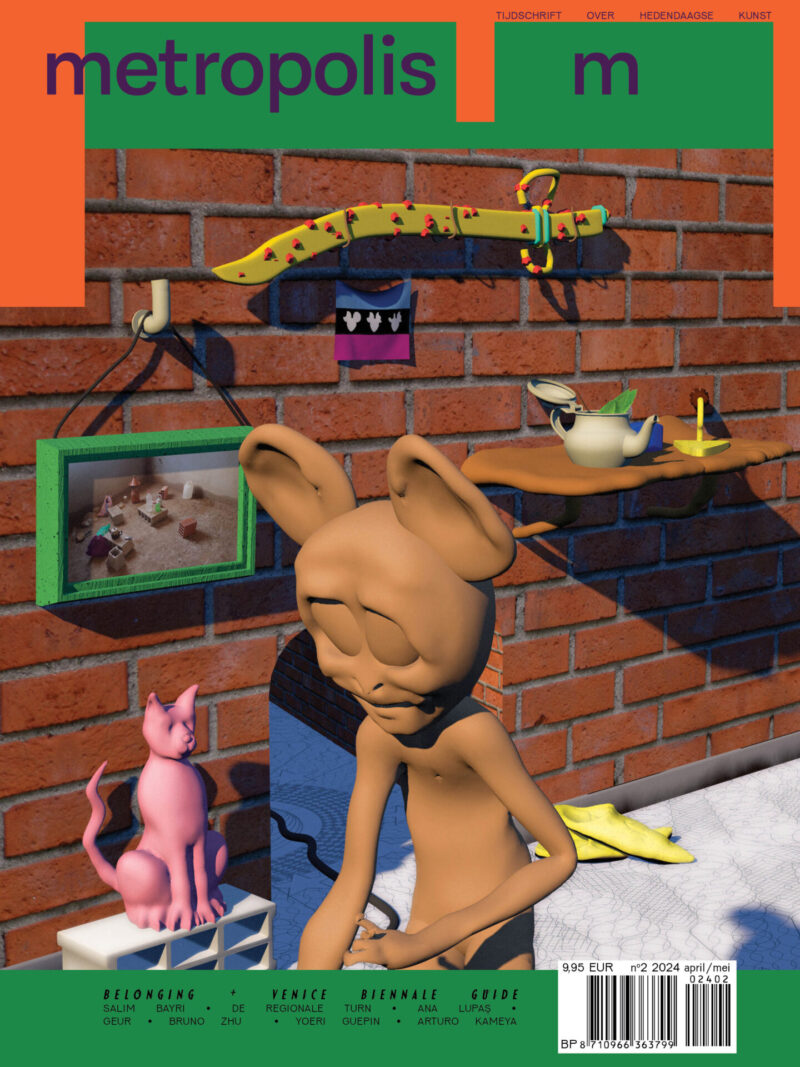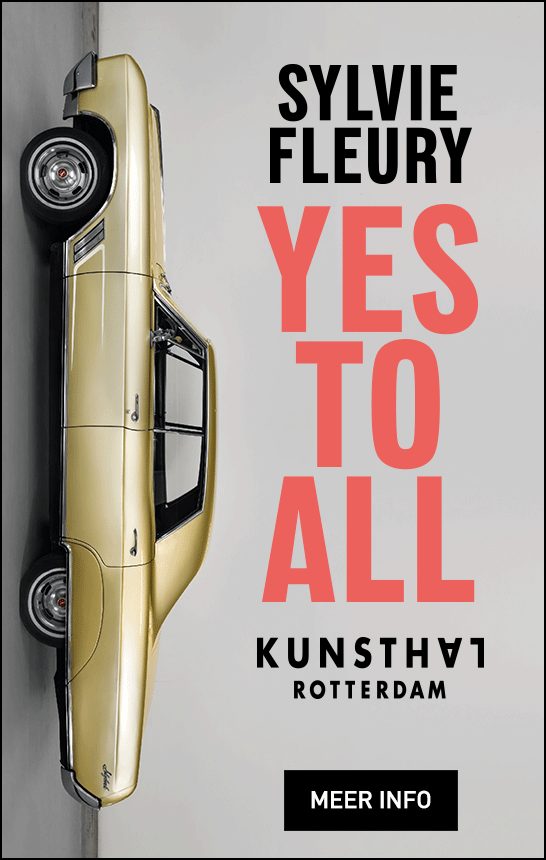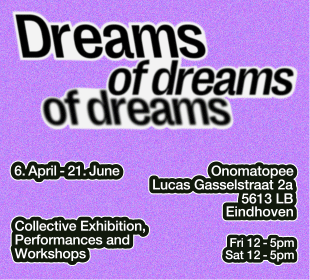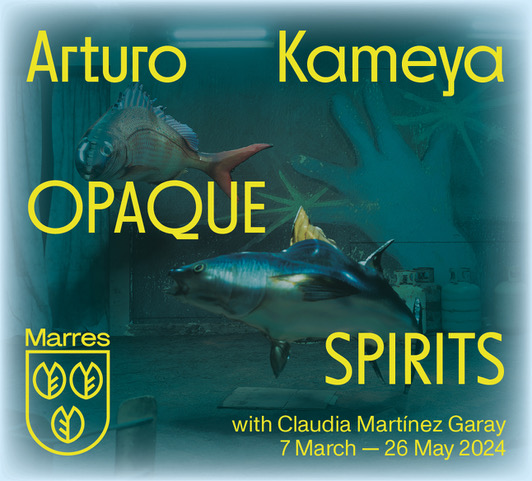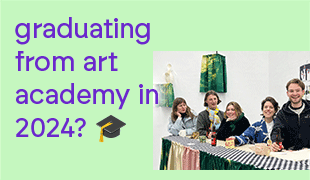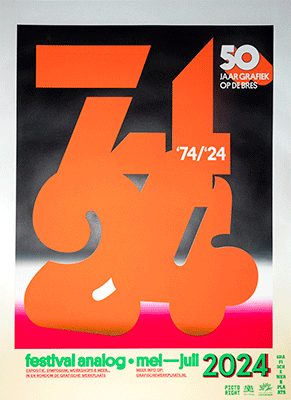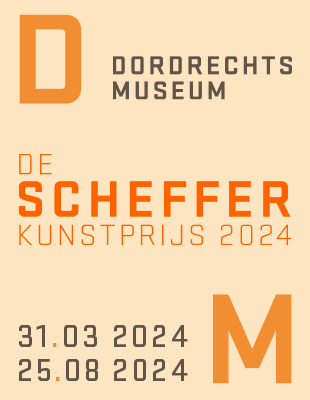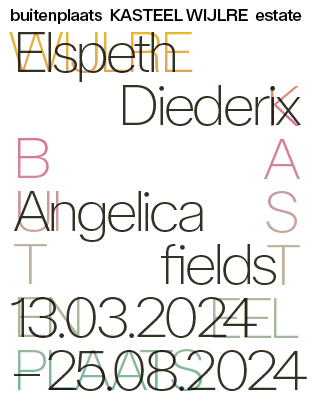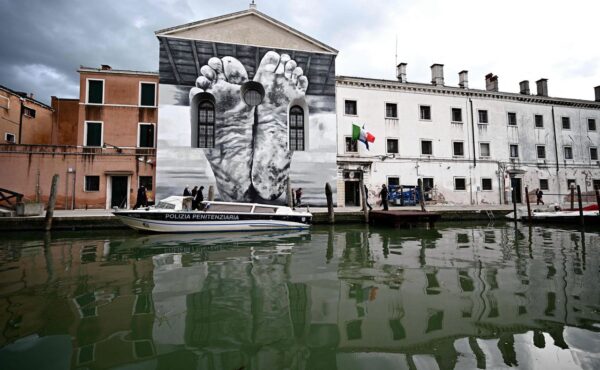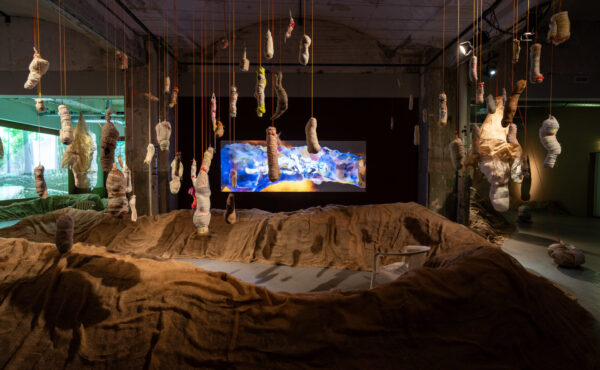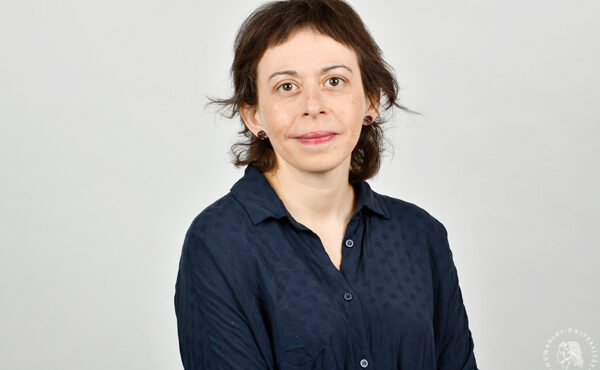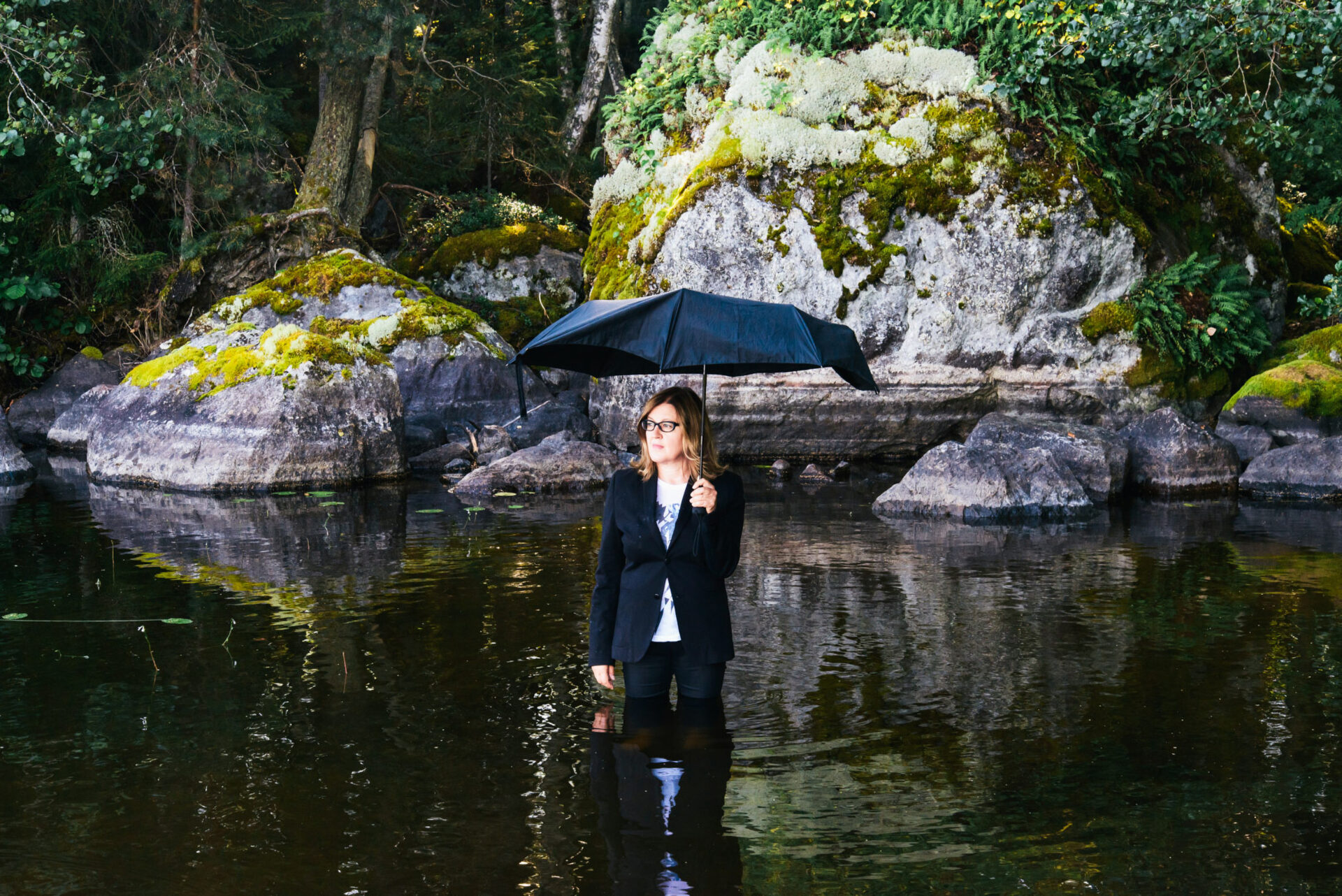
APRIL in early spring – a conversation with Eija-Liisa Ahtila
In one well-known work by Eija-Liisa Ahtila an enormous spruce is shown horizontally, spread across six screens. Each fragment captures a slightly different perspective, lighting and leafy energy. For the exhibition The Wood for the Trees, currently on show at the Kröller-Müller Museum, the Finnish artist created a new work about the forest. Julia Fidder speaks to Ahtila about the role of the forest in her work and life, the healing effects of being close to nature and her most recent work, APRIL ≈ 61°01’ 24°27’.
The Kröller-Müller Museum is located in the middle of the Hoge Veluwe National Park, meaning that visitors have to travel through a dense variety of natural landscapes, including sandy tundra’s and pine forests, prior and following each exhibition visit. As the museum proudly boasts in the introduction text to The Wood for the Trees (Door de bomen het bos), there is no museum in the Netherlands that is as intertwined with nature as the Kröller-Müller Museum. For this current exhibition, this intertwining is wrought even deeper, as the surrounding trees have been invited to take root inside the premises of the museum. Including works by four artists, the exhibition itself also stretches beyond the museums’ walls with a programme of walks and activities in the sculpture garden. Besides Ahtila, the artists included in the exhibition are Andy Holden, Julian Charrière, and Hans Op de Beeck, who, each in their own way, examine the relationship between humans and nature; ranging from bird-watching to climate change.
Ahtila’s new multi-channel moving image installation APRIL ≈ 61°01’ 24°27’ (2024) connects the forest of the Veluwe to the Finnish forest of Aulanko Nature Park, by bringing a little piece of Aulanko into the Kröller-Müller Museum. When I meet the artist in her studio in Helsinki she tells me that she doesn’t spend much time there, as most of her recent work happens outside. In her older works, Ahtila mainly focused on individual identities and their relation to the external world. The human was the main character in these works, and the artist would emphasise the distinctive characteristics of the person in front of the camera. Since then, there has been a graduate shift in the subject and perspective of Ahtila’s work. Over the years, non-humans appear more and more often in her moving image installations, while narration and staging are retrieved to the background.
‘In the first screen you can see the forest covered in snow during winter, while in screen number eight it is shady because the foliage doesn’t let the light through. Every step in between them is a step away from winter, towards the summer.’

A continuous element in Ahtila’s practice is the use of split-screen and multi-channel video, media she also uses in her most recent work. APRIL spreads across eight screens, the opening shot shows a landscape that is so life-like and enveloping, it instantly transports the viewer into the forest. The initial single frame image breaks into eight fragments through a movement of the zoom, from where each of the screens follows its own path through the woods in a slightly different pace. The slow zoom of Ahtila’s camera allows the viewer to come up close and move slowly through the forest. The images move dyssynchronically, creating different intervals between the eight screens. The almost-tangible quality of the tree trunks, the soft sounds of rustling leaves and the meditative pace with which we are guided past the branches and vegetation allow for an immersatory experience.
The forest and its trees in particular also take centre-stage in earlier works by the artist, like HORIZONTAL (2011) and STUDIES ON THE ECOLOGY OF DRAMA (2014). When I ask Ahtila about what the forest means to her and her artistic practice, she reminisces about her childhood fantasy of owning a dog, a luxury the young artist could not afford at the time. ‘I wanted to have a dog for years but for a long time we couldn’t afford it. So when I was in high school I worked during the summers until I saved up enough money to get one. The dog and I would spend many days in Aulanko together. The forest was close to my family home.’ Walking there daily for hours on end, the forest became a familiar environment for the artist: ‘I still know all the paths, where all of them go, where they cross each other.’ It is from this personal history that her works emerge, as Ahtila still regularly returns to the forest to record new videos.
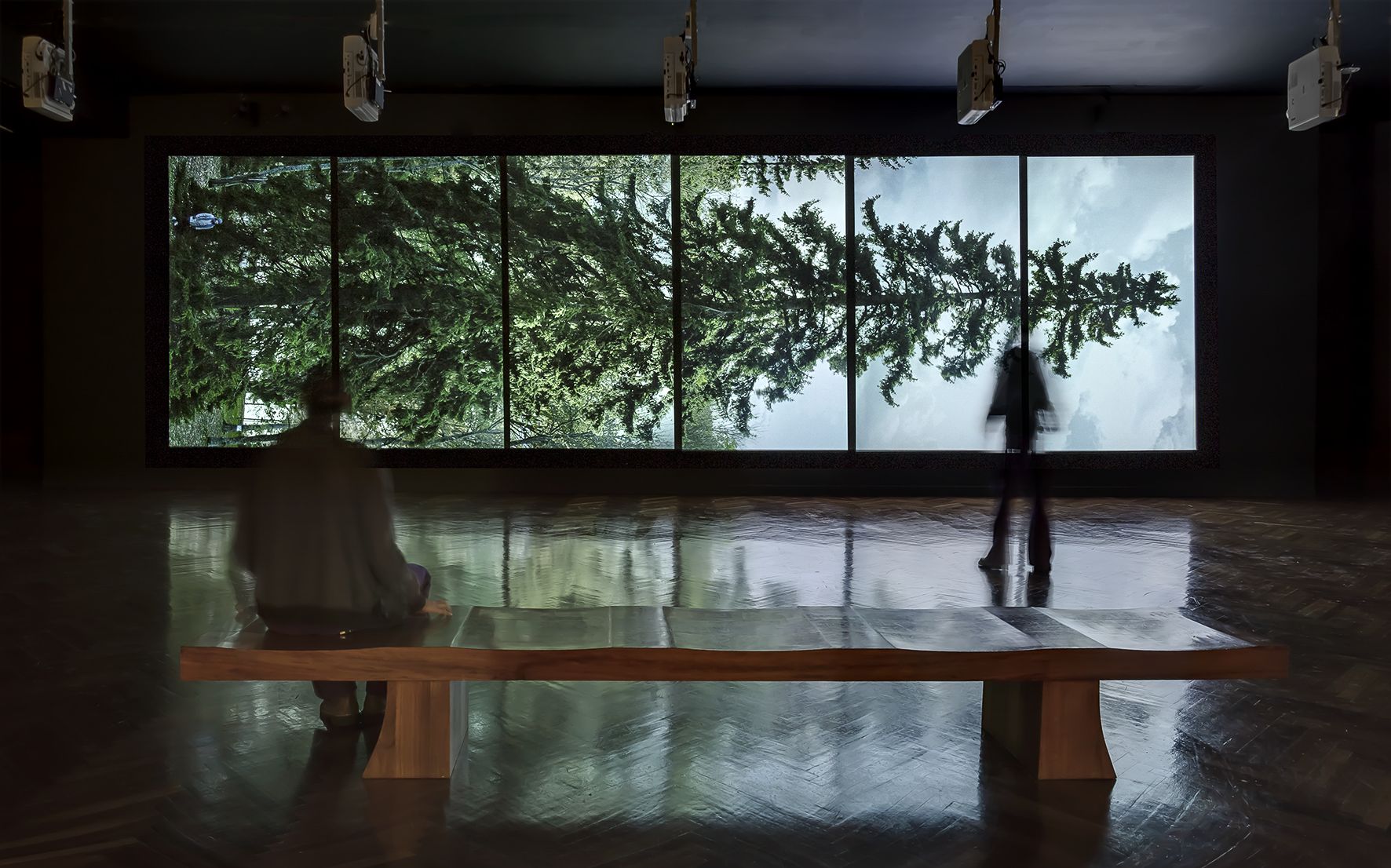
Time is of importance when looking at APRIL. The video’s were shot over the span of more than two years. The durational aspect of the work is present through indications of passing time and seasons, the falling and melting snow, the bare skeletal fingers of branches later covered in vibrant green leaves. Through the eight screens Ahtila visualises a suggestion of several coexisting moments in time. ‘The focal point in the work is the transition from winter to summer. In the first screen you can see the forest covered in snow during winter, while in screen number eight the leaves are there, it is shady because the foliage doesn’t let the light through. Every step in between them is a step away from winter, towards the summer.’ The slow transition of the cold to the warm season is made visible in the soft changes in colour and light, reminiscent of many more changes going on within the forest. Ahtila explains that the title of the work refers to the month in which she finds these changes are most rapid, when the snow vanishes, sunlight becomes brighter and warmer each day, and when the first leaves bud from the tips of branches. ‘When you work in a forest, the first thing you learn is that change is the only permanent thing. Everything is always changing. Not one day is similar, not the hour that follows the previous one.’ Nature does not allow for anticipation, as each year the blossoming starts at a different time and if you miss it you need to wait for a whole new year, while at other times nature keeps you waiting for sunlight for weeks. ‘For my current work, I am trying to make a year-round overview of all four seasons. That’s a nightmare! But also very interesting, I have been working on it for almost three years now and we still have things to shoot. Because, you know, whenever you realise you are missing something, it is gone already. Nature is changing all the time; we are waiting for the sun, but then there are leaves on the trees already. When I started to make APRIL, I thought I could do it in a year but I ended up having to shoot the material for over two years.’
Taking on a role that might be best qualified as mediator, Ahtila makes sure that the image, the size and the sound of her works are properly installed, although conveying a narrative is not one of her goals anymore. The artist purposely aims to avoid using her own observations and interpretations in order to represent the non-human world as directly as possible. Another work that centres the more-than-human perspective is the video installation HORIZONTAL, which portrays an almost life-sized spruce tree on its side. ‘The name comes from having to position the tree in a human space, such as the museum. Human spaces are made for us shorter creatures, so there was no way to portray the tree vertically, only horizontally. The work is a portrait of a tree, while a portrait is something that is generally reserved exclusively for humans. The work questions how we perceive things through the camera lens, and how we relate to other beings.’
‘It is very challenging to create a narrative in which you do not underestimate the environment, the region around it and the living beings in it.’
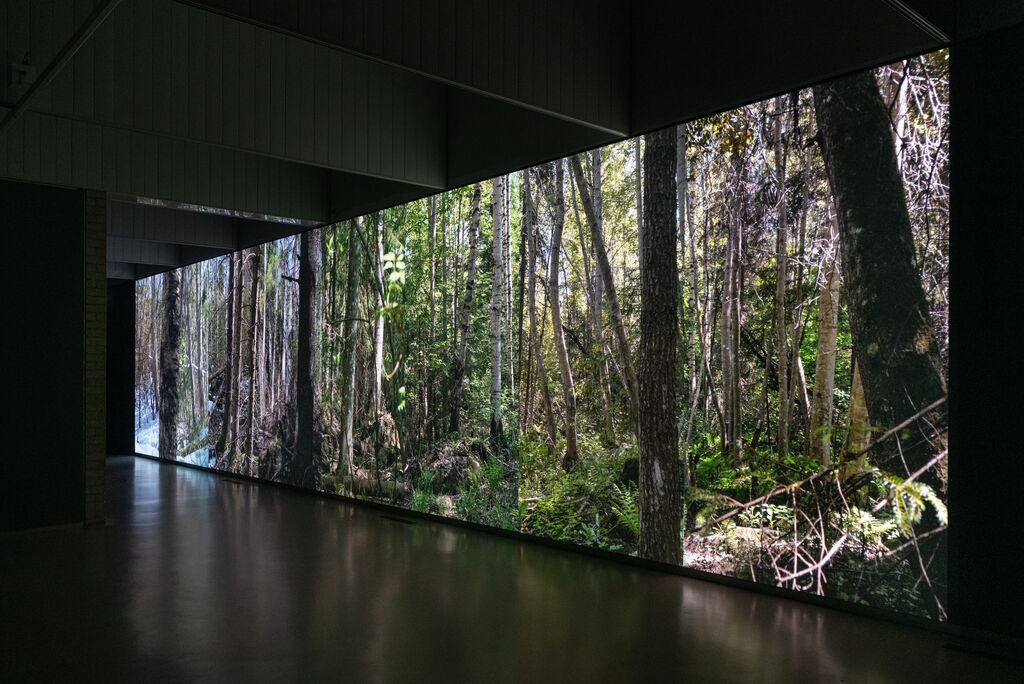
Documentation as a tool to make the human interpretation redundant, here, is an act of anti-anthropocentricity. Ahtila explains that her work of the past years is dedicated to these inquiries related to the medium of moving image. ‘It is very challenging to create a narrative in which you do not underestimate the environment, the region around it and the living beings in it. This takes time. I needed to learn to pull myself back so my interpretation does not overshadow the non-human perspective.’ She investigates different modes of documentation, exploring the potential of ecological narration as an alternative to anthropocentric modes of documenting, which is not an easy task. ‘APRIL looks like a document, or one can think about it as a document, but the human is always present in the camera movements and what the camera does. One could also think about it as the fictional element in the work. The way in which the spaces in the forest are featured is also fictional, in the sense that it is a constructed image of the location and how it is displayed. The work looks at the forest through a human medium and a human sense.’
Being close to nature, Ahtila explains, can have a healing effect: ‘In Finland, people of my age and older know the forest. The forest is part of their life. There are so many forests in Finland, you could say that everyone has their own local forest. Many people know what a forest does to you. How calming it is, how much better you understand what life consists of when you spend time in a forest. How many different things it offers to a human. Only recently it has become more difficult to get attached to a forest because next year it could be cut and gone completely.’ Ahtila admits that it is an impossible task to create a direct representation of nature, yet emphasises that she is determined to let her works be as much of an unfiltered image as possible in order to convey the healing properties of the forest. ‘I suppose, in that sense, I don’t have to do much as an artist. Nature does its “thing”. I just document it and present it to my audience who watch it, and then maybe watch it again and again.’
Eija-Liisa Ahtila’s work is included in the exhibition The Wood for the Trees (Door de bomen het bos), which is on view from 23.3 until 15.9.2024 at the Kröller-Müller Museum in Otterlo. More information on the website of the museum.
Julia Fidder
is curator en schrijver, woont in Helsinki